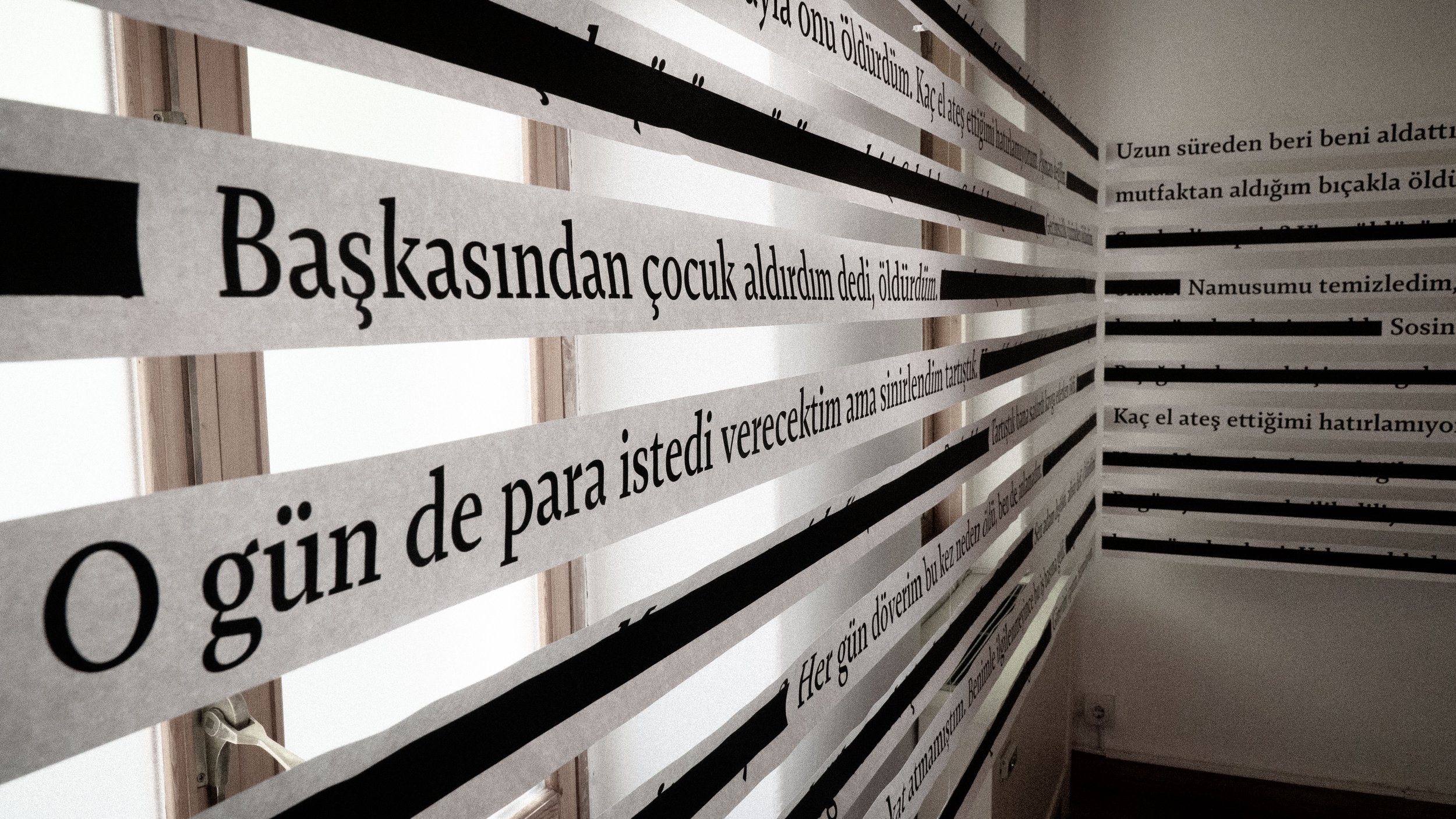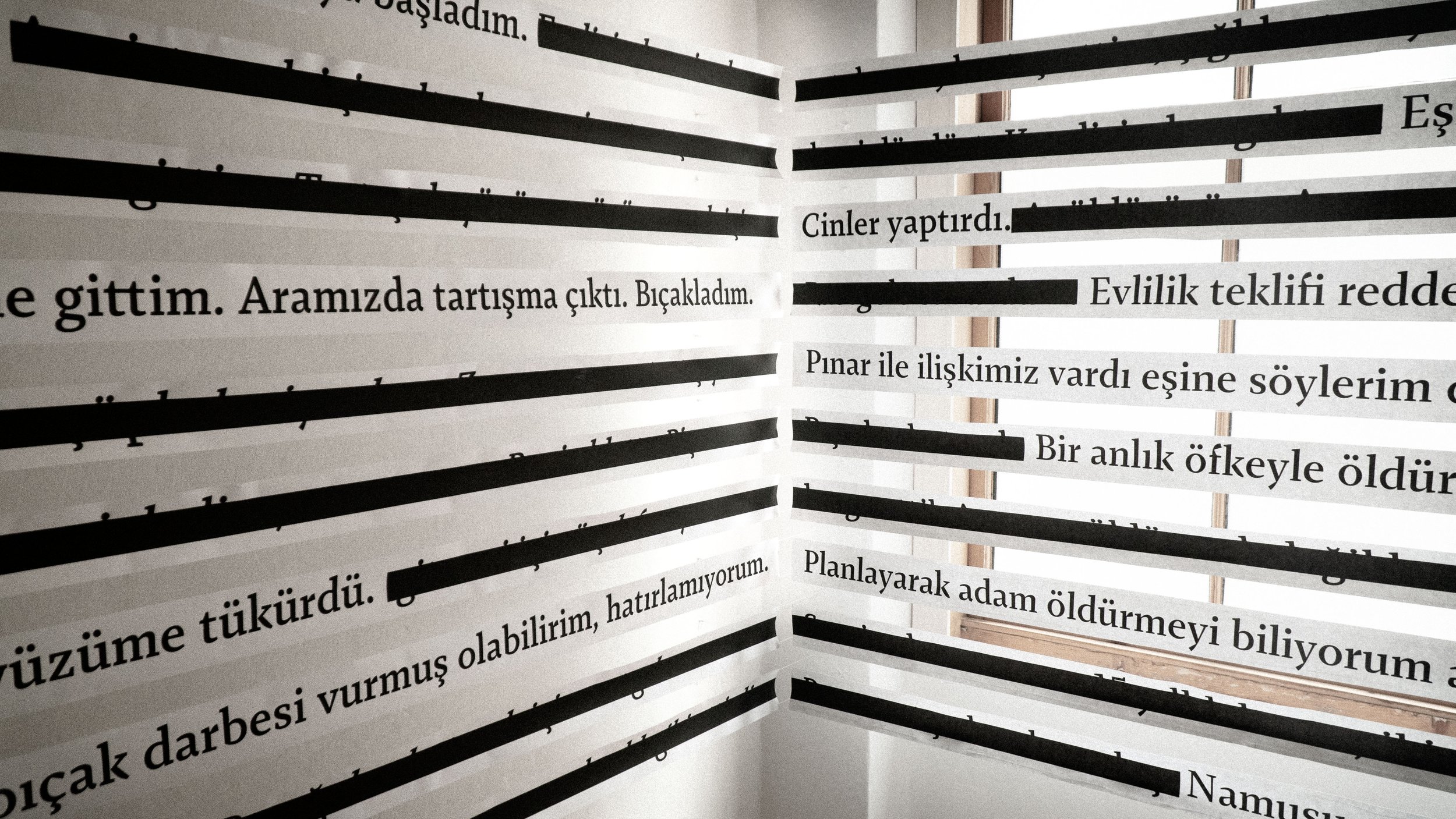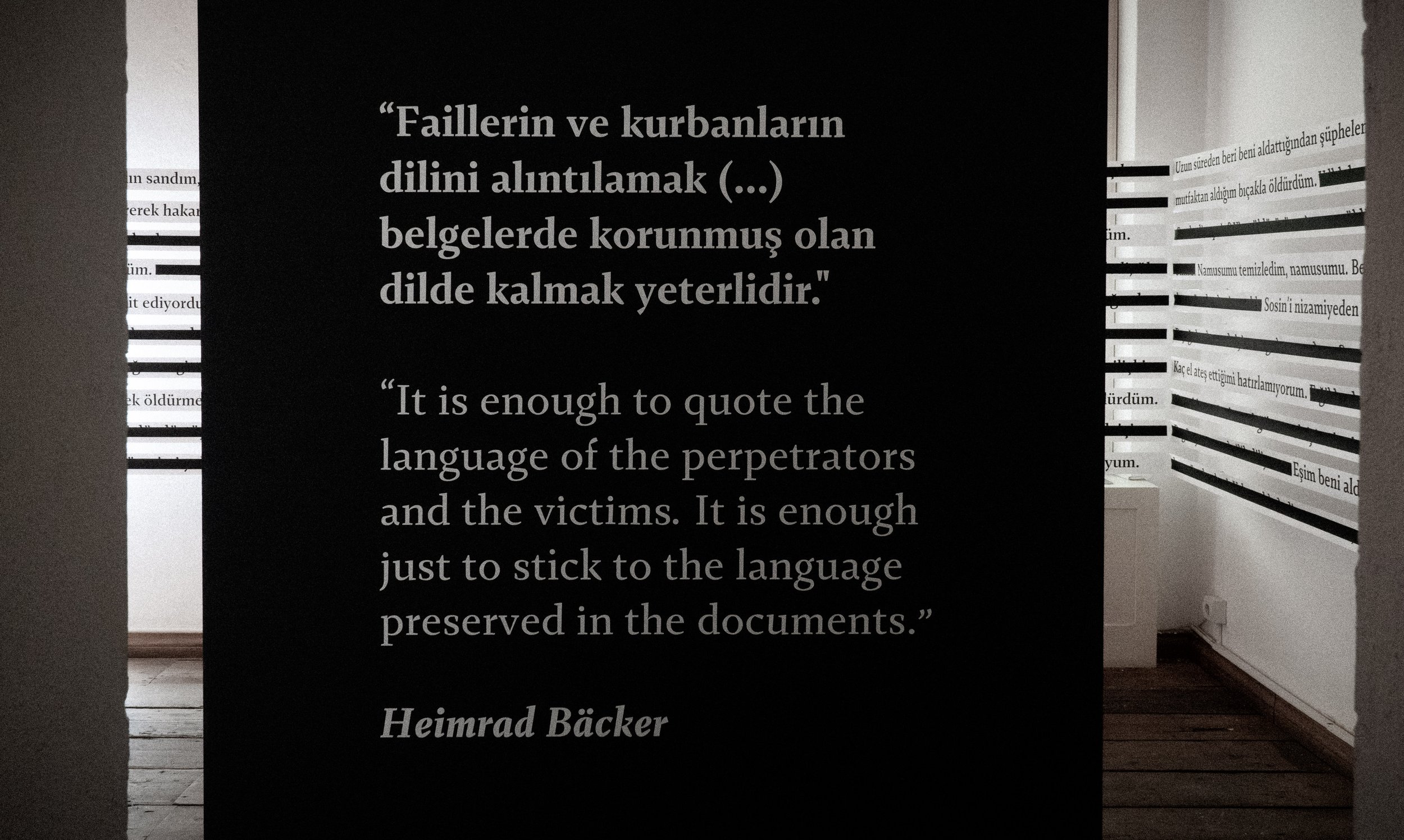
Austrian poet Heimrad Bäcker, in the preface to his book Transcript which is considered one of the masterpieces of concrete poetry, pointed to the language used by the actors of war and totalitarianism to understand the Holocaust, the greatest crime of the 20th century: “It is enough to quote the language of the perpetrators and the victims. It is enough just to stick to the language preserved in the documents.” In the days just before the expiration of the Istanbul Convention, which happened on July 1, Elvin Eroğlu highlights the horror in minds by making an archival study to show the sheer truth of femicide in both the spoken and written languages of the victims and perpetrators.













Austrian poet Heimrad Bäcker, in the preface to his book Transcript which is considered one of the masterpieces of concrete poetry, pointed to the language used by the actors of war and totalitarianism to understand the Holocaust, the greatest crime of the 20th century: “It is enough to quote the language of the perpetrators and the victims. It is enough just to stick to the language preserved in the documents.” In the days just before the expiration of the Istanbul Convention, which happened on July 1, Elvin Eroğlu highlights the horror in minds by making an archival study to show the sheer truth of femicide in both the spoken and written languages of the victims and perpetrators.
